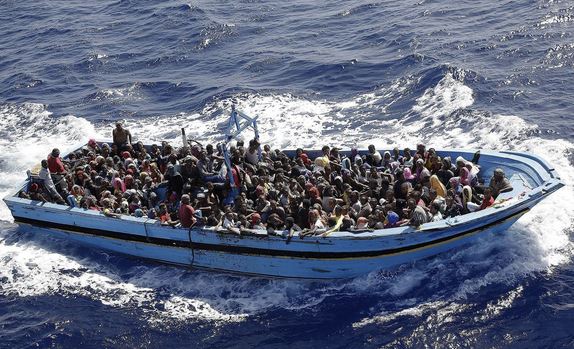African migrants risk all in the Mediterranean Sea

In 2014, according to the United Nations High Commissioner for Refugees (UNHCR), about 200,000 people, including 15,000 unaccompanied children, made the dangerous journey across the Mediterranean. The majority arrived from ports in Libya, Tunisia and Egypt. This was a dramatic increase from the 60,000 that were estimated to have arrived in Italy in 2013.
In November 2013, one month after a tragedy in which 366 migrants died when just one boat sank off the Italian island of Lampedusa, Italian authorities set up the lifesaving Mare Nostrum operation. It lasted exactly one year before being disbanded because of EU and Italian government pressure. Now a combination of Italian coast guard and EU Frontex boats patrol the waters and continue to pluck migrants from the sea.
Many of these migrants are shipped from the northern Libyan ports of Tripoli, Benghazi and Misrata and ferried over by highly organized smuggling operations whose communication tentacles spread deep into the African continent and beyond into Syria, Gaza and other parts of the Middle East.
In these winter months the number of voyages lessens, as many migrants refuse to pay for the journey during the rough weather despite ever-growing unrest in Libya. In September 2014, Getty Images Reportage photographer Giles Clarke spent a month in the region traveling from Lampedusa to Malta, Sicily, and through mainland Italy up to Vienna, 1,000 miles to the north. Over the month, he met some people who have escaped war-torn countries and talked to a few of those closely involved with providing aid and much-needed humanitarian help…
Read more

